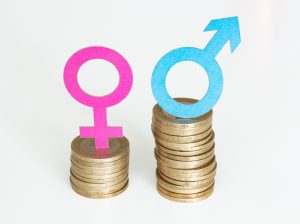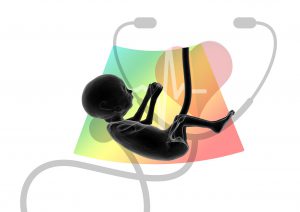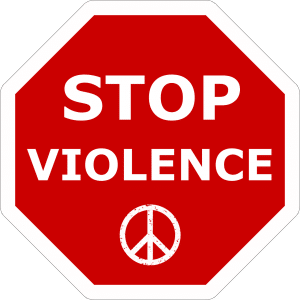It’s Women’s History Month again! So, as with any month that is dedicated to highlighting the history of a “minority” (and we use that term loosely, since women make up more than half of the population) or marginalized group, there will be a lot of focus on historical figures who have beaten the odds and have made a big difference. And that’s great: history is there for us to learn from, and that’s what we should be doing.
But the problem with this way of thinking is that there’s a danger of losing sight of those who couldn’t beat the odds, and those who are still working to do so. So while we’ll certainly think about women’s fascinating past this month, and how we’ve gotten where we are today, we also want to focus on the futures of all women. To do that, let’s look at ways that we can ensure bright futures for all women. One way to do this is by supporting organizations run by and for women that strive toward equality in the present.
Where We Are Now
There’s no doubt that women have made great strides over the centuries, especially over the last one, and we would never want to diminish those hard-fought battles, and the rights and achievements we have attained. But it’s also clear that we still have a long way to go. Consider these stats about where we are today:
- The gender wage gap persists – In 2020, women earned 84% of what men earned, according to a Pew Research Center analysis of median hourly earnings of both full- and part-time workers. Based on this estimate, it would take an extra 42 days of work for women to earn what men did in 2020. Those extra few cents also mean that women make at least $80,000 less over their lifetime than men – and that doesn’t even take into account the fact that African American, Latinx, and Indigenous women will earn even less over their lifetimes.
- Domestic violence is still an alarming problem – More than 1 in 3 women (35.6%) in the U.S. will experience rape, physical violence and/or stalking by an intimate partner in their lifetime, and nearly 20 people per minute are physically abused by an intimate partner in the United States. During one year, this adds up to more than 10 million people – and again, these numbers change when adjusting for factors like race, sexual orientation, gender identity, disability, and housing status. In addition, on average, more than 3 women are murdered by their intimate partners in the U.S. every day.
- Sexual violence and harassment plague us – One in five women in the United States has experienced a completed or attempted rape during their lifetime, and 81% of women have reported experiencing some form of sexual harassment and/or assault in their lifetime. And consider this unexpected statistic: the estimated lifetime cost of rape is $122,461 per victim.
- Women are still underrepresented – Women are 51% of the population in the U.S. but make up only:
-
- 27% of Congress at large
-
- 24% of the U.S. Senate
-
- 27% of the U.S. House of Representatives
-
- 0% of presidents of the United States
-
- 30% of statewide elected executives of any kind
-
- 31% of state legislators
-
- 31% of the largest cities’ mayors
-
- 25% of mayors in cities with populations over 30,000
And, again, these numbers are not adjusted for race, income level, or age. 
- Access to reproductive healthcare remains an issue – Although most U.S. maternal deaths are preventable, we have the highest maternal mortality ratio among wealthy nations. In addition, contraception and assisted reproduction services are often unaffordable and out of reach for many, and 90% of counties in the country are without a single abortion provider. African American women, Indigenous women, and people of color, and those living in rural communities and with lower incomes, are disproportionately harmed when healthcare is inaccessible. For example, African American and Indigenous women in the U.S. are roughly three times more likely to die from pregnancy-related complications than white women.
Organizations to Support
The above facts and statistics highlight just a few of the issues that continue to stand in the way of ALL women moving forward, and having the chance to make history. And these numbers can make things seem hopeless, or like nothing has changed or will ever change, but that’s not true! Things have gotten better, and can continue to improve, thanks to the hard work of many people. So what can you do, if you’re not in the position to get into the trenches and do some hands-on work? You can help by supporting the following organizations.
Note: we have highlighted issues and statistics here in the U.S., as well as organizations aimed at supporting women in the U.S., but there are many, many excellent organizations helping women around the world that are well worth your time and money.
1. National Women’s Law Center
The National Women’s Law Center, a nonprofit organization based in Washington, DC, has played an active role in the passage of legislation that supports women’s rights. It also advocates for women’s health care and reproductive rights, as well as the rights of children and families. Its current 100 Wins 100 Days campaign is asking for the Biden administration to prioritize a range of political initiatives from passing the Equality Act to protecting tipped workers, who are primarily women, impacted by the pandemic. You can donate to the National Women’s Law Center to support its fight for gender justice.
2. Coalition to Stop Violence Against Native Women
According to the National Institute of Justice, four out of five Native women experience violence in their lifetime, so the Coalition to Stop Violence Against Native Women (CSVANW) is dedicated to ending violence against Native women and children. By advocating for and engaging with tribal communities, CSVANW is working toward a future where all people can feel safe.
3. I Support the Girls
I Support the Girls serves women and girls experiencing homelessness, and it does so in a way that is often overlooked. They believe “A woman shouldn’t have to choose between feeding herself and her personal health. Every woman should have the ability to maintain her dignity.” So they collect and distribute essential items, including bras, underwear, and menstrual hygiene products to women experiencing homelessness, impoverishment, or distress like domestic violence.
4. Trans Women of Color Collective

The Trans Women of Color Collective “seeks to shift the narrative of surviving to thriving in our communities.” The group provides a network to trans women of color where they can meet entrepreneurs, healers, and collaborators to help them succeed.
5. INCITE!
A network of self-described radical feminists of color, INCITE! works to end violence in our homes, communities, and at the state level. They’ve created accessible activism toolkits to help encourage community organization against issues that disproportionately impact women of color like police brutality and gender violence.
6. National Asian Pacific American Women’s Forum
The National Asian Pacific American Women’s Forum (NAPAWF) is currently the only national organization dedicated to empowering Asian American and Pacific Islander women and girls through community mobilization and political change. They do this through their work in reproductive rights advocacy, economic justice, and immigrant rights.
7. Women’s Prison Association
The Women’s Prison Association works to keep women out of prison, support women who are incarcerated, and help women who were previously incarcerated set up for life afterward. This includes finding affordable housing, preparing them for job interviews, or locating any mental health services they might need.
8. Girls Who Code
Girls Who Code empowers young women to pursue careers in technology and computer science. The organization offers after-school coding classes for young women in 3rd grade through 12th grade, as well as summer programs and an alumni network. They have worked with 185,000 girls in all 50 states, and college-aged alumni of the program are majoring in computer science at a rate 15 times the national average.
9. The Center for Reproductive Rights
The Center for Reproductive Rights uses litigation and advocacy to fight for the rights of women to have access to quality reproductive health and resources.
10. Girl Up
Girl Up is a nonprofit organization that works to defend gender equality through leadership development training sessions for school-aged girls and women, according to the website. There are currently 3,300 registered Girl Up clubs in 50 US states, two territories, and 118 countries.
11. UltraViolet
According to their website, UltraViolet “work[s] to end violence against women, increase economic security for women and families, and ensure that all women have access to full and affordable health care services.” They do this through “a combination of organizing, technology, creative campaigning, and people power.”
12. She Should Run
She Should Run is a nonpartisan organization that inspires women to run for office by providing a free starting place for women to explore running for office. Its current goal is to get 250,000 women to run for office by 2030. Through its Ask a Woman to Run tool and She Should Run incubator, women from all backgrounds can enroll in courses on leadership, networking, and communication skills to build their individual paths to candidacy.
13. Poetic Justice
Poetic Justice offers both in-person and remote creative writing for women in a growing number of prisons in the U.S. According to their website, their “vision is to offer opportunities for healing and growth by holding space to process trauma and rewrite personal narratives to transform the story of incarceration.”
It’s extremely important to know our history, but it’s just as vital that we support our present and empower our future. The organizations above are working hard to do this – and there are so many more that are doing so, as well, it just takes a little research to find one that speaks to you. So if these many, many organizations and many, many women and allies who are hard at work are any indication, the future is bright.